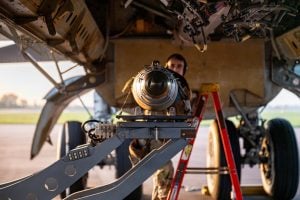Introduction
Science plays a vital role in our understanding of health, biology, and heredity—especially for defence aspirants, where awareness of basic biology is essential. Among the many topics studied in the NDA/CDS syllabus, epidemics, animal tissues, and genetics are crucial for understanding both human biology and the challenges faced in real-world health crises. A strong grasp of these topics enables individuals to appreciate the functioning of the body, the impact of diseases, and the principles of heredity, all of which are integral to informed decision-making in health and defence services.
Common Epidemics
An epidemic refers to the rapid spread of a disease within a specific population or area over a short period. Some of the most common epidemics include influenza (flu), cholera, malaria, and more recently, COVID-19. Epidemics are caused by infectious agents like bacteria, viruses, or parasites. For instance, cholera is caused by Vibrio cholerae bacteria, while malaria is caused by Plasmodium parasites transmitted by Anopheles mosquitoes.
Understanding epidemics requires knowledge of how pathogens spread—through air, water, vectors, or direct contact. Preventive measures such as vaccination, sanitation, vector control, and public awareness campaigns play a crucial role in controlling epidemics. The recent pandemic has underlined the importance of early detection, isolation, and coordinated public health responses.
Animal Tissues
Animal tissues are groups of cells that work together to perform specific functions. There are four primary types of animal tissues: epithelial, connective, muscular, and nervous tissues.
- Epithelial tissue covers the body surfaces and lines internal organs. It functions in protection, absorption, and secretion.
- Connective tissue provides support and binds other tissues together. It includes bone, blood, cartilage, and adipose tissue.
- Muscular tissue is responsible for movement and includes skeletal, smooth, and cardiac muscles.
- Nervous tissue is found in the brain, spinal cord, and nerves. It helps in transmitting electrical signals throughout the body.
Each tissue type is vital for the proper functioning of the body and is highly specialized to perform its role efficiently.
Genetics
Genetics is the branch of biology that deals with heredity and the variation of inherited characteristics. It is founded on the work of Gregor Mendel, who discovered the basic laws of inheritance using pea plants.
Genes, made up of DNA, carry the instructions for building and maintaining an organism. They determine everything from eye color to susceptibility to certain diseases. The structure of DNA, discovered by Watson and Crick, revolutionized our understanding of how traits are passed down from one generation to the next.
Key concepts in genetics include dominant and recessive traits, genotypes, phenotypes, mutations, and genetic disorders. Genetics also plays a significant role in modern fields like biotechnology, gene therapy, and forensic science.
Conclusion
A basic understanding of epidemics, animal tissues, and genetics provides a strong foundation for tackling both academic and real-life challenges. Whether it’s recognizing how diseases spread, understanding body structure, or grasping the principles of heredity, these topics are interconnected and essential for anyone preparing for a career in the armed forces. With increasing global health concerns and biological advances, a solid grip on these biological concepts equips NDA and CDS aspirants with the knowledge to serve the nation wisely and effectively.



















